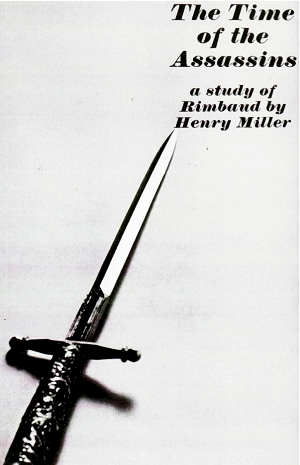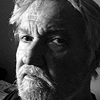
Published at a time when many artists, if not world citizens, were trying to recover a little poetry in their war-ravaged lives, Henry Miller came out with this book about Arthur Rimbaud, the enigmatic French Symbolist poet who died in 1891 at thirty-seven. As a figure in culture, this poet and adventurer represented Henry’s life-long obsession, a book about the man who haunted him—in his psychic life and his work—and taunted him to see through the blunders of culture: to search his insides and live up to it—if he had the courage. This long essay on Rimbaud explores the depths of the great poet’s truncated life, and his even more stunted life in literature, and it’s clear Henry was always in awe of Arthur.
Henry says at first he shunned Rimbaud’s work, as he was living his own season in hell; but “his presence was always with me. It was a disturbing presence, too. ‘Some day you will have to come to grips with me.’ That’s what his voice kept repeating in my ears.”
Henry was living in a shack at Big Sur on the rugged California coast. It was a place of reflection, yet Henry was pessimistic, he makes no bones about it: “If the mission of poetry is to awaken, we ought to have been awakened long ago.” He thinks there are no poets today (the post-war period), or only ones who have surrendered their calling; and “It is so not because the world is immune to the poet’s pleading, but because the poet himself no longer believes in his divine mission.”
I’m sure that right after the bombs atomized those Japanese civilians it was difficult to see much poetry through the shock waves they caused on the cultural attitudes of the whole West. Nonetheless, Henry’s mission was to raise poetry to the highest level of human achievement, to make it worthy of the people who live inside its confines.
In a very poetic, most certainly dans le style français, Henry waxes on about Rimbaud’s life. “There will be no other life for him…he chose it from beyond the grave. All the elements of his character were laid down at birth; they will lend to his destiny the unique character of his agony. He will suffer not only because his parents willed it, not only because his age demanded that he suffer, he will suffer because of the whole evolution through which the spirit of man has gone. He will suffer precisely because it is the spirit of man which is in travail. He will suffer as only the seed suffers when it falls on barren ground.”
In another place he says, “It was his destiny, it seems, to have wings and be chained to the earth.” This is not an uncommon feeling with artists, but it was Rimbaud who anguished in public about it, who tossed the whole framework of his culture aside, or, worse, condemned it to insignificance. Indeed, his most caustic, yet revealing, epithet,
Qu’est mon néant, auprès de la stupeur qui vous attend? (“What is my nothingness to
the stupor that awaits you?”)—which is a gob of spit in the face of art, as Henry had so eloquently introduced in his own book The Tropic of Cancer.
Henry realized, as he claims Rimbaud had realized, “that the poison of culture had transformed beauty and truth into artifice and deception.” Will this become the epitaph of the 21st century? That the shallowness and greed of today’s culture has poisoned us, until, as Freud has lamented, we are too feeble to recover the lost laughter of infancy?



Responses to “A look back at ‘The Time of the Assassins: A Study of Rimbaud’ by Henry Miller”